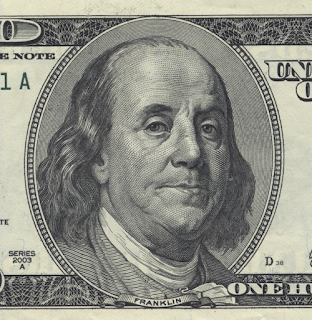Mindy Crandell was in line to purchase lottery tickets for the $590.5 million Powerball jackpot when another woman cut in front of her and her daughter. That woman, Gloria C. Mackenzie, won the lotto with the ticket Mindy would have purchased.
 |
| Powerball Lottery Near Winner Mindy Crandell. |
I’ve never bought a lotto ticket and never will. After this Florida office pool won a recent lottery, I told my coworkers that I wouldn’t participate in one & wouldn’t collect a share of the winnings even if they won. Lotteries are bad, as James Poulos argues. Lotteries are so bad that the negative effects even extend to neighbors and family members of winners. I suppose Crandell’s story points to one reason Poulos doesn't mention why not to buy one: that you’ll avoid the situation of knowing you could have bought the winner if only…
Billionaire investorWarren Buffett provides a better rationale for staying away from the lotto. Former GEICO chairman Jack Byrne once offered a deal to everyone attending a business get together of golf and bridge. Byrne would take an $11 dollar ‘premium’ that would pay $10,000 to anyone who hit a hole in one over the course of the weekend. That’s a payoff of just about 1,000-1.
 |
| Jack Byrne |
It was genius by Byrne. All the people attending were wealthy and could spare $11 without batting an eye. Plus, it was fun—and I’m sure made several T-boxes a lot more exciting places while well-struck balls were in flight.
Every single person who attended took Byrne up on his offer. Except Buffett. Though he could have spared the $11 more easily than most if not all of the participants—Buffett was at this point in the late 1980s well on his way to becoming a billionaire—he didn’t take the offer because he hated the odds.
Buffett was right.
“Charlie Munger and I detest taking even small risks unless we feel we are being adequately compensated for doing so.” $11 dollars surely counts as a small risk. His discipline in not taking that bet offers a powerful lesson for those of us not on any Forbes lists.
If only Crandell knew her odds were worse than Buffett’s, she would have given up her spot not graciously, but enthusiastically. Interestingly, she did know. "The joke was, that's the lady that's going to win it. I was like, 'Yeah right. No one is going to win from little Zephyrhills,'" ABC News reported Crandell as saying.
Crandell’s attitude and courtesy are impressive and admirable. Refusing to engage in self-pity or schadenfreude, she reportedly is happy for Mackenzie and hopes the money "truly blesses her family."
A line from the ABC News report struck me: “The one thing Crandell did gain from the incident was a lesson she hopes her daughters learned.” I completely agree. Only I wish she had a different lesson in mind.
"It could have been us, but things happen. Sometimes it's better to be patient than right. I knew we were teaching our daughter the right thing," Crandell said.
She’s partly right. It is better to be patient than right. But, as Warren Buffett’s example teaches us, it’s even better to be disciplined.
It’s that discipline that allows him to win awards like this:



























